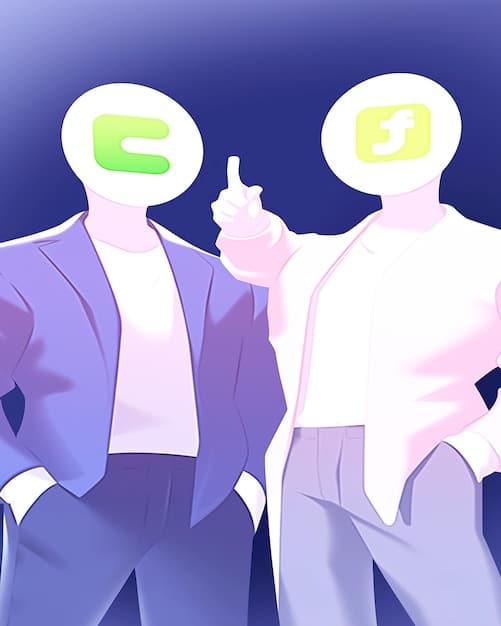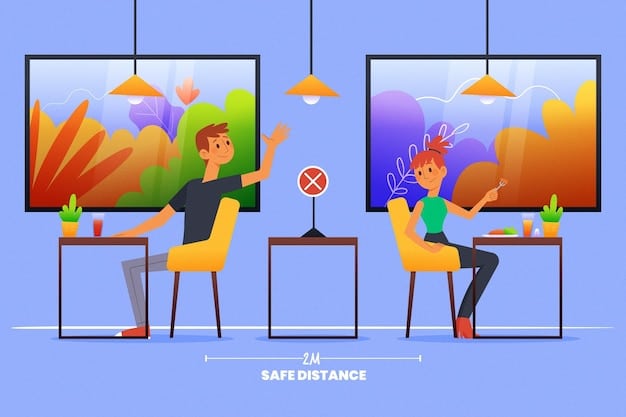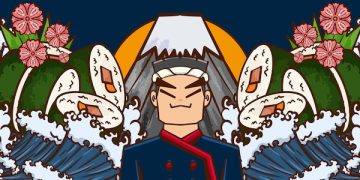Is It Okay to Not Be Okay: A Deep Dive into the J-Drama Phenomenon

Is It Okay to Not Be Okay is a South Korean romantic drama that explores mental health and healing, following a psychiatric hospital employee and a children’s book author as they navigate their emotional wounds and find solace in each other.
Dive into the world of “Is It Okay to Not Be Okay,” a compelling J-Drama that tackles sensitive themes with a unique blend of storytelling and visuals. Why has this series resonated so deeply with audiences worldwide, and what sets it apart from other dramas in its genre?
Unveiling the Plot and Characters
In “Is It Okay to Not Be Okay”, the narrative weaves together the lives of Moon Gang-tae, a selfless psychiatric ward caregiver, and Ko Moon-young, a popular children’s book author with antisocial tendencies.
“Is It Okay to Not Be Okay” showcases a unique storyline that many deem as different compared to other generic plots that Korean Dramas offer. As the series progresses, their individual struggles and the circumstances of the two become intertwined which make for a suspenseful turn of events. What is it that makes both characters attracted with the appearance of many similarities in their life? Let’s explore each character more below:
Moon Gang-tae: The Empathetic Caregiver
Moon Gang-tae is portrayed as a man burdened by responsibility from a young age, working tirelessly to care for his autistic older brother, Moon Sang-tae. His life is marked by constant sacrifice and emotional suppression.
Ko Moon-young: The Author with a Dark Past
Ko Moon-young, on the other hand, is a character haunted by a traumatic childhood, leading to her emotionally detached and often volatile behavior. She writes dark fairy tales that reflect her inner turmoil.
The chemistry between the lead actors, Kim Soo-hyun and Seo Yea-ji, is undeniable, bringing authenticity and depth to their roles. This makes it easier for viewers to resonate with the story. As an aside, supporting characters like Oh Jung-se as Moon Sang-tae, Gang-tae’s older brother, also delivered exceptional performances. The drama shows diverse perspectives, which is something not commonly seen in many titles. The performance of the cast surely made this J-drama a hit.
The characters’ growth is a central theme, as they learn to confront their past traumas and embrace vulnerability.
- Gang-tae learns to prioritize his emotional needs and to let go of the guilt and self-imposed burdens.
- Moon-young gradually opens herself up to others, forming genuine connections and allowing herself to be loved.
- Their journey is about finding healing and understanding the importance of self-acceptance.
The narrative structure is well-paced, creating suspense and capturing the viewers every episode. The character developments add to the show’s high rating as well. In the end, both character’s will be able to find their own identity.
“Is It Okay to Not Be Okay” weaves a complex story of healing and self-discovery through its plot and characters, which sets it apart from other J-dramas in its portrayal of mental health.
Exploring Mental Health Themes
“Is It Okay to Not Be Okay” delves into the subject of mental health which is evident in the characters and the theme. The drama is praised for tackling a very sensitive topic that has been taboo in many societies and cultures. The drama portrays a very important message across its viewers. How does the drama tackle these issues?
The drama tackles various topics like autism, antisocial personality disorder, and post-traumatic stress disorder. All these are portrayed through its characters. The drama doesn’t shy away from issues and it approaches it with sensitivity and with respect. This has led to a positive reception because many viewers commend it for its realistic depiction of mental health conditions.

Challenging Stereotypes
The drama also challenges stereotypes associated with mental illness. Each character is treated with respect and without judgment. It treats mental illness like any other illness, highlighting what people with mental health conditions face throughout their lives. This contributes to a better understanding and acceptance in today’s society.
- The drama portrays the struggles faced by caregivers of people with mental illness.
- It shows the impact of childhood trauma in adulthood.
- The importance of therapy and support systems in managing mental health conditions.
Despite the heavy themes, the drama infuses moments of humor and lightheartedness, providing a balance that keeps the tone engaging.
“Is It Okay to Not Be Okay” is a drama that explores the complexities of mental health with sensitivity and depth, making it a significant contribution to the mental health conversation. Its authentic portrayal of characters and their struggles has resonated with audiences, thereby creating awareness for mental health.
The Visual and Artistic Elements
“Is It Okay to Not Be Okay” is a visual masterpiece because of its distinct artistic elements that enhance the narrative. To further explore, how do these aesthetic choices contribute to the drama’s themes and emotional impact?
The drama features vibrant colors, unique sets, and symbolic props to create a visually stunning viewing experience. Each color scheme is carefully selected to evoke different emotions and moods, in which, the dark tones are used during scenes that are suspenseful. The set designs also change depending on which each character represents, providing an immersive experience for viewers.
Symbolic Art Direction
The art direction is not merely decorative, but deeply symbolic, enhancing the storytelling. One good example is the Moon-young’s castle which represents isolation and inner turmoil reflecting the character’s emotional state.
- Costume design is used to reflect each character’s personality and emotional journey.
- The cinematography employs creative camera angles and compositions to emphasize emotional nuances.
- The use of animation and fantasy sequences adds a layer of depth and imagination to the story.
The music is also an important element to consider in the drama, particularly the use of the soundtrack because it complements the drama’s emotional tone. The original songs in the drama further amplify the emotional impact of key scenes.
The visual and artistic elements play a crucial role of “Is It Okay to Not Be Okay.” From set designs to soundtracks, everything helps enhance the narrative and provide an immersive viewing experience to its viewers.
Analyzing the Fairytale Motif
“Is It Okay to Not Be Okay” incorporates a fairytale motif that is interwoven throughout the drama. Ko Moon-young’s profession as a children’s book author, incorporates dark and unconventional elements into her stories.
The usage of fairy tales mirrors life’s harsh realities, with underlying theme that helps highlight the dark realities that certain individuals may have encountered. This makes it easier for the viewers to appreciate both the characters’ stories.
Some of the fairytale elements shown are the symbolic representations of trauma and healing. “The Red Shoes” is an enchanting yet captivating story that helps reflect Moon-young’s obsession with control and the destructive effects of suppressing one’s true self. “The Boy Who Fed on Nightmares” shows Gang-tae’s struggle with his past traumas and his journey towards self-acceptance.

Subverting Traditional Tropes
While fairy tales are commonly associated with good themes, the drama subverts those notions, presenting them with a darker, realistic tone.
- The drama uses fairy tales to explore the characters’ inner worlds and psychological states.
- It connects childhood stories with adult experiences.
- It helps highlight similarities between real life and fantasy.
The fairytale motif in “Is It Okay to Not Be Okay” is not just a decorative element; it is a deeply integrated aspect of the narrative that enriches the drama’s exploration through its unique approach to storytelling.
Global Reception and Impact
“Is It Okay to Not Be Okay” has achieved global success, earning both critical acclaim and commercial success. What is it about this drama that has resonated with viewers across different cultures and regions?
Many viewers praise the drama for its unique story, strong performances, and tackling of important social issues. It has garnered a dedicated international fanbase. The drama also generated discussions about mental health, trauma, and the importance of self-care, prompting conversations on social media and beyond.
Awards and Recognition
The drama has also won prestigious awards, recognizing its excellence in storytelling, directing, and acting. Its global recognition has helped bring more attention to the themes.
- Aired on international streaming platforms, making it accessible to a global audience.
- Translated into multiple languages hence expanding its reach.
- The drama also gained popularity through word-of-mouth recommendations and positive reviews.
The drama’s global success can be attributed to its unique story, universal themes, and its powerful impact which has allowed more viewers to appreciate the characters’ journeys.
The global reception and the drama’s impact solidify its place as one of the most beloved and influential J-dramas in recent years. Its message of hope and resilience continues to resonate with viewers worldwide.
[Título da seção FAQ em en-US]
| Key Point | Brief Description |
|---|---|
| 🎭 Characters | Complex figures dealing with the past while experiencing character growth. |
| 🧠 Mental Health | Explores mental health like autism and personality disorder with sensitivity. |
| 🎨 Visuals | Vibrant colors and creative set designs that enhance the narrative. |
| 📚 Story | Dark fairytale motifs intertwined with realistic social issues. |
Frequently Asked Questions
“Is It Okay to Not Be Okay” is a J-drama that revolves around a psychiatric caregiver and a children’s book author who find solace and healing in each other as they grapple with their emotional wounds.
The lead actors are Kim Soo-hyun, who plays Moon Gang-tae, the psychiatric caregiver, and Seo Yea-ji, who portrays Ko Moon-young, the children’s book author with anti-social behavior.
The drama explores several mental health issues. This includes autism, anti-social personality disorder, and post-traumatic stress disorder, portrayed through the characters’ experiences and struggles.
This drama uses fairy tales to highlight and mirror the characters’ inner worlds and psychological states, connecting childhood stories with adult experiences, enriching the drama’s storytelling.
It is unique because of its unique exploration of mental health themes, strong performances, its captivating visual elements, unique storylines, and its messages of healing, resilience, and self-acceptance.
Conclusion
“Is It Okay to Not Be Okay” goes beyond the typical J-drama formula, offering a glimpse into the characters’ hearts. The sensitive and artistic approach of the drama to the narrative has earned it critical acclaim. With its compelling plot and universal themes, it sends a message of healing, offering a source of inspiration to viewers worldwide.





